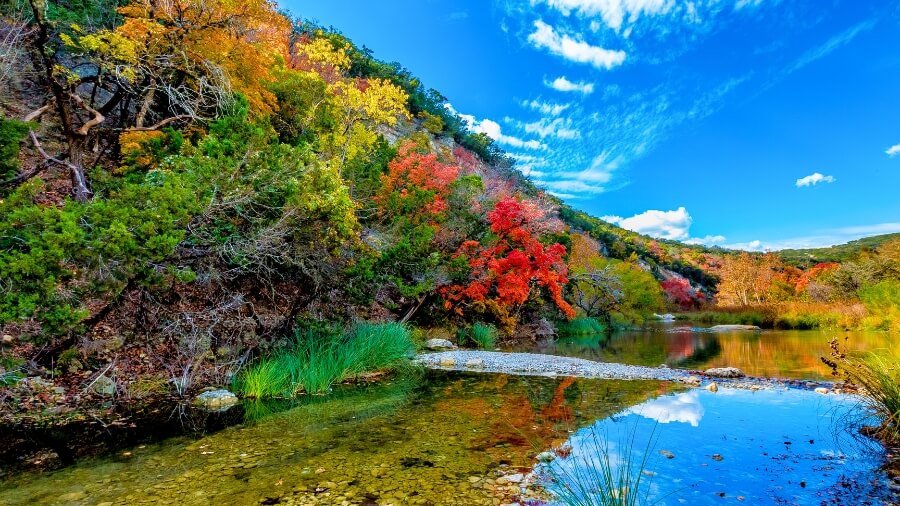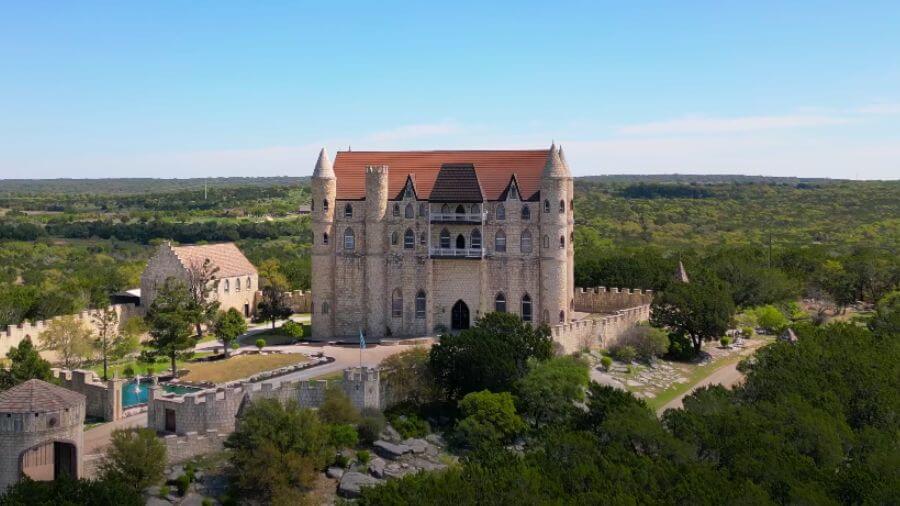Texas is a beautiful state and there’s so much to see.
But where do you start?
Well, this post reveals the best natural wonders that you absolutely can’t miss!
From mystical waterfalls and crystal clear waters to pre-historic landscapes that dinosaurs would be jealous of, this post has it all.

Have YOU been to all of these places?
1. Hamilton Pool Preserve
Hamilton Pool Preserve is a hidden gem located just outside of Austin, Texas.

This natural pool, created thousands of years ago when the dome of an underground river collapsed, features a stunning 50-foot waterfall cascading into jade-green waters below.
You can swim in the pool, hike along the nature trails, or enjoy a picnic in the scenic surroundings.
The area is home to diverse plant and animal life, including rare bird species and lush vegetation.
Due to its ecological significance, Hamilton Pool Preserve is protected as a nature preserve, ensuring its beauty for generations to come.
You should note that access to the pool is limited and requires reservations during peak seasons.
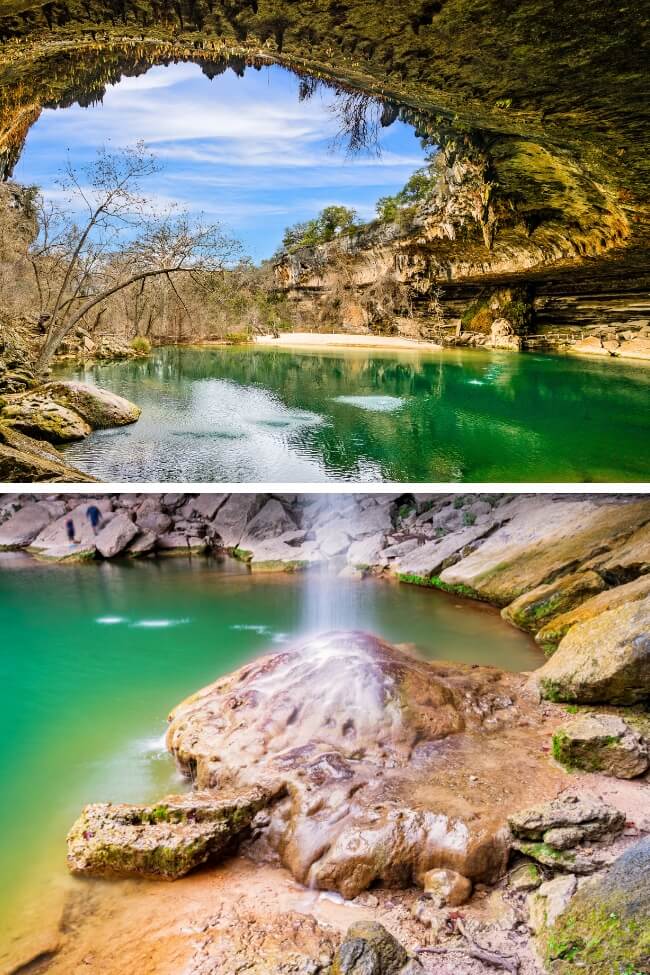
Hamilton Pool Preserve offers a tranquil escape from the hustle and bustle of city life, providing a serene oasis of natural beauty in the heart of Texas.
As far as water-based natural wonders go, it’s pretty darn good.
2. Big Bend National Park
Big Bend National Park is a vast area in southwest Texas with stunning natural beauty.
It’s famous for its towering mountains, rugged canyons, and the winding Rio Grande River.
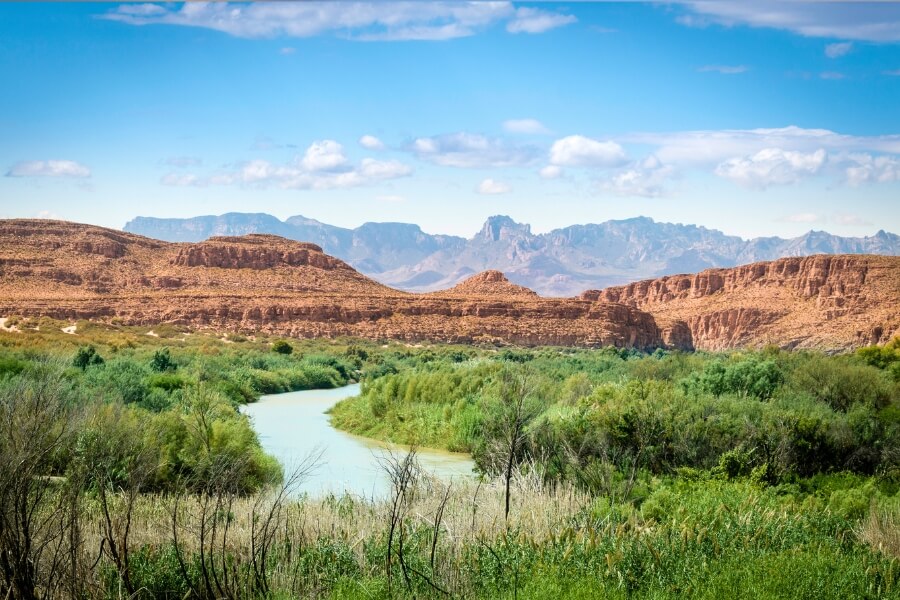
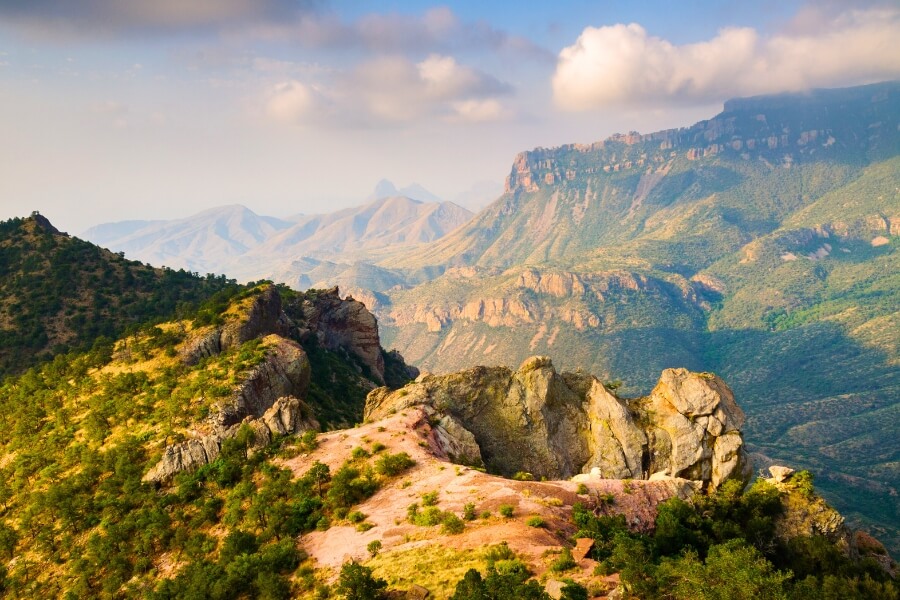
You can explore over 800,000 acres of diverse landscapes, including desert terrain and lush riverbanks.
One of the park’s highlights is the Rio Grande, which forms a natural border between the United States and Mexico, offering breathtaking views and opportunities for river rafting.
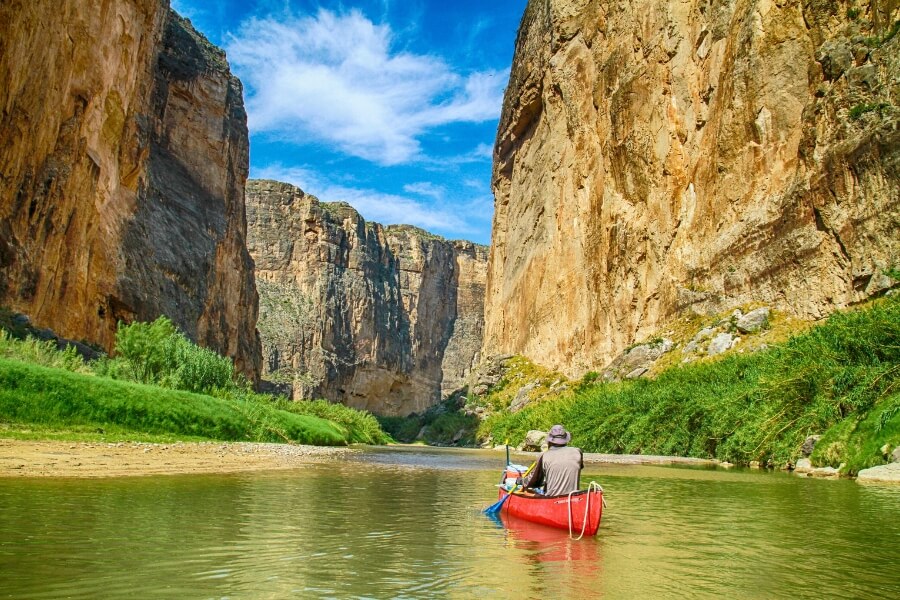
If you want to see wildlife then you won’t be disappointed.
Here you have the chance to spot a variety of animals, from roadrunners and javelinas to mountain lions and black bears.
Hiking trails range from easy walks to challenging treks, providing something for adventurers of all skill levels.

With its clear night skies, Big Bend is also a prime spot for stargazing, so it’s a good thing that there are camping options available in Big Bend.
3. Guadalupe Mountains National Park
Guadalupe Mountains National Park, located in west Texas, is a beautiful place with rugged mountains and vast desert landscapes.

It’s home to the highest peak in Texas, Guadalupe Peak, which offers breathtaking panoramic views.
You can explore numerous hiking trails, including the popular Devil’s Hall Trail and McKittrick Canyon Trail, where you have the chance to see diverse wildlife like mule deer and golden eagles.
The park also features ancient fossilized reefs, providing a glimpse into the region’s geological history.
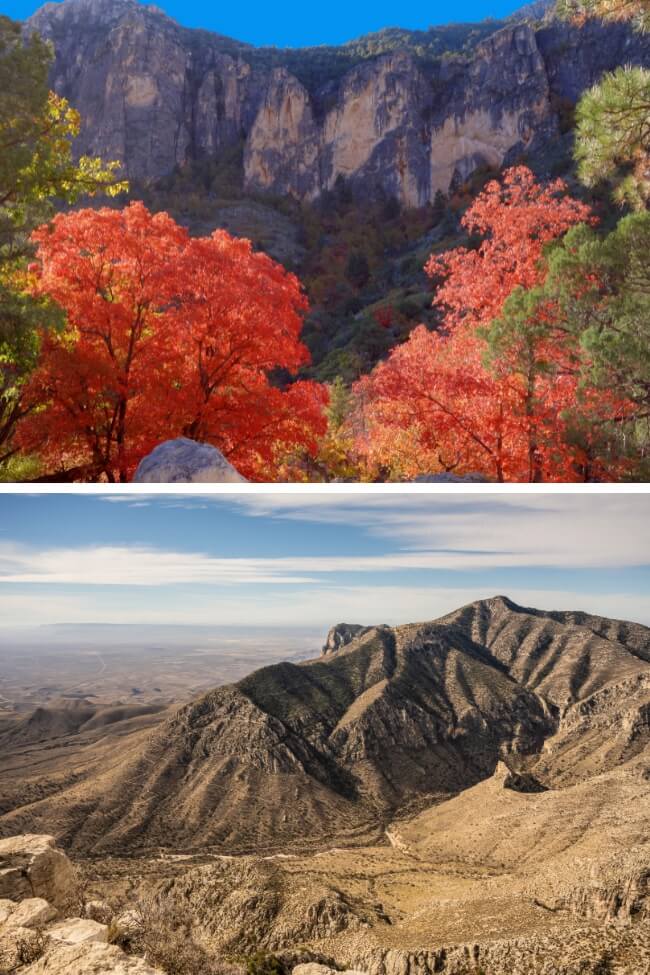
Similar to Big Bend National Park, this place is great for stargazing and campers can enjoy serene nights under the star-filled skies, surrounded by the peaceful wilderness.
4. Palo Duro Canyon
Palo Duro Canyon, often referred to as the “Grand Canyon of Texas,” is a natural wonder found in the Texas Panhandle.

Carved by the Red River over millions of years, the canyon stretches for over 120 miles and it showcases vibrant rock formations and steep cliffs.
It’s actually the second-largest canyon system in the United States!
You can explore the canyon by hiking, biking, or horseback riding along its numerous trails, such as the Lighthouse Trail, which leads to a famous rock formation resembling a lighthouse.

The park also offers scenic overlooks, perfect for capturing stunning photographs of the rugged landscape below.
During the summer months, you can enjoy outdoor performances of the acclaimed musical drama “Texas” at the nearby Pioneer Amphitheater.
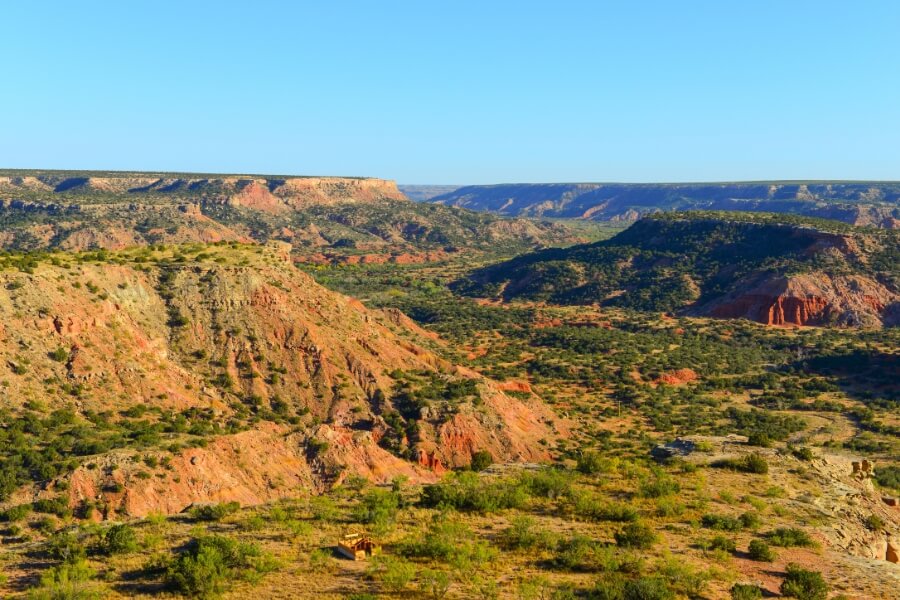
You won’t be disappointed if you visit this Texan natural wonder.
5. Padre Island National Seashore
Padre Island National Seashore is a pristine coastal paradise located off the southern coast of Texas and it has the longest undeveloped barrier island in the world.
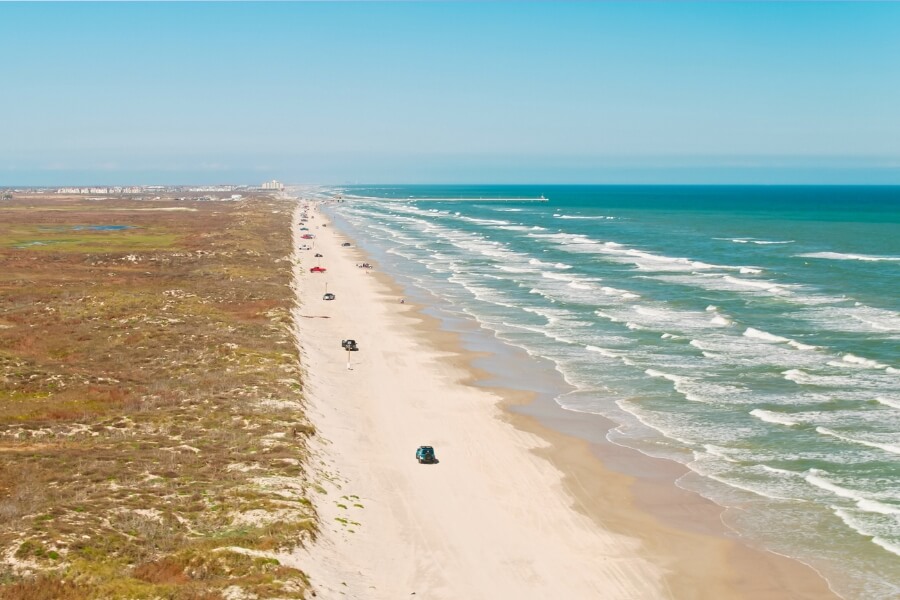
With about 66 miles of undeveloped beaches and natural habitat, Padre Island National Seashore is a beautiful place on the Gulf of Mexico.
The park’s pristine beaches are welcoming to wildlife, including endangered sea turtles and migratory birds.
You can enjoy a variety of outdoor activities, such as swimming, sunbathing, fishing, and beachcombing.
The park also offers opportunities for camping, with campsites available near the beach for a truly immersive coastal experience.

If you’re into nature and the coast, then you’ll definitely fall in love with this place.
6. Caddo Lake
Caddo Lake, located on the border between Texas and Louisiana, is a mystical wonderland of cypress swamps, Spanish moss-draped trees, and bayous.
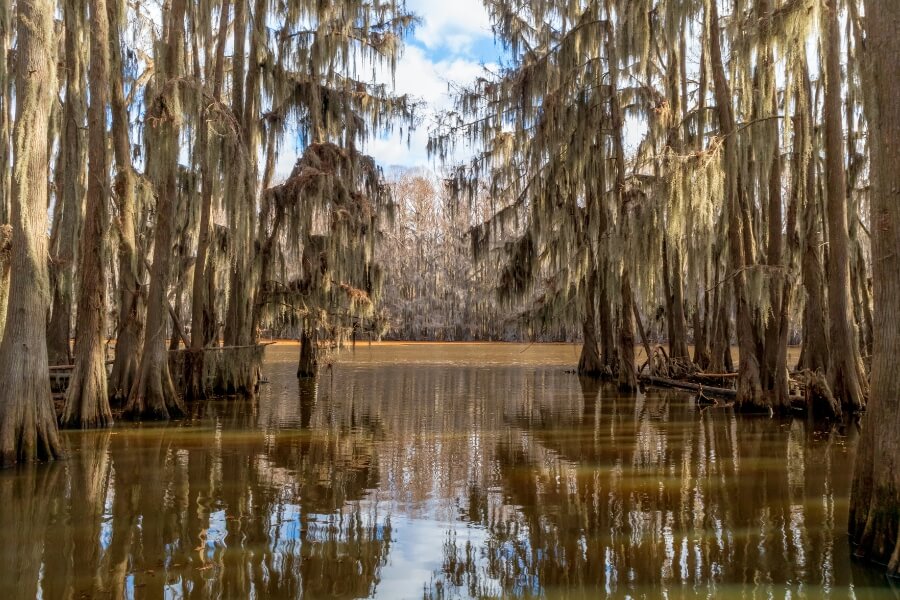
It is the largest natural lake in Texas and home to the largest cypress forest in the world!
It’s a unique natural wonder in Texas that is known for its scenic other-worldly beauty and diverse wildlife.
You can explore the lake by boat, kayak, or canoe, navigating through a network of meandering waterways and hidden channels.

The lake is teeming with fish, making it a popular destination for anglers looking to catch bass, crappie, and catfish.
Birdwatchers will love it here as you can spot a variety of bird species, including bald eagles, herons, and egrets.

The surrounding wetlands are also home to alligators, turtles, and otters.
7. Natural Bridge Caverns
Natural Bridge Caverns, located near San Antonio, Texas, is an underground wonderland of spectacular limestone formations and hidden chambers.
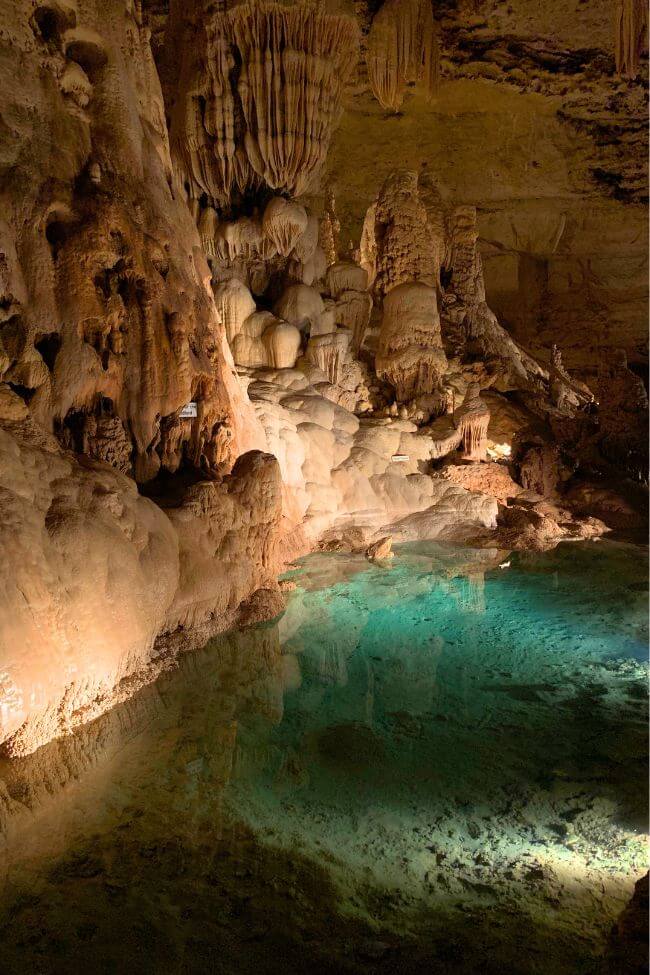
Discovered in 1960 by a group of adventurous spelunkers, the caverns showcase stalactites, stalagmites, and flowstone formations, some of which are over 180 feet tall!
You can explore the caverns on guided tours, descending deep into the earth to witness the awe-inspiring beauty hidden beneath the surface.
And you don’t have to worry about changing seasons here as the caverns maintain a constant temperature of 70 degrees Fahrenheit year-round.

Above ground, the Natural Bridge Caverns Park offers additional attractions, including zip lining, gem mining, and a maze, making it a fun-filled destination for the whole family.
8. Enchanted Rock State Natural Area
Enchanted Rock State Natural Area, located near Fredericksburg, Texas, is home to one of the largest batholiths in the United States.
💡 Batholith
A batholith is a large mass of intrusive igneous rock (also called plutonic rock), larger than 100 km2 (40 sq mi) in area, that forms from cooled magma deep in Earth’s crust.
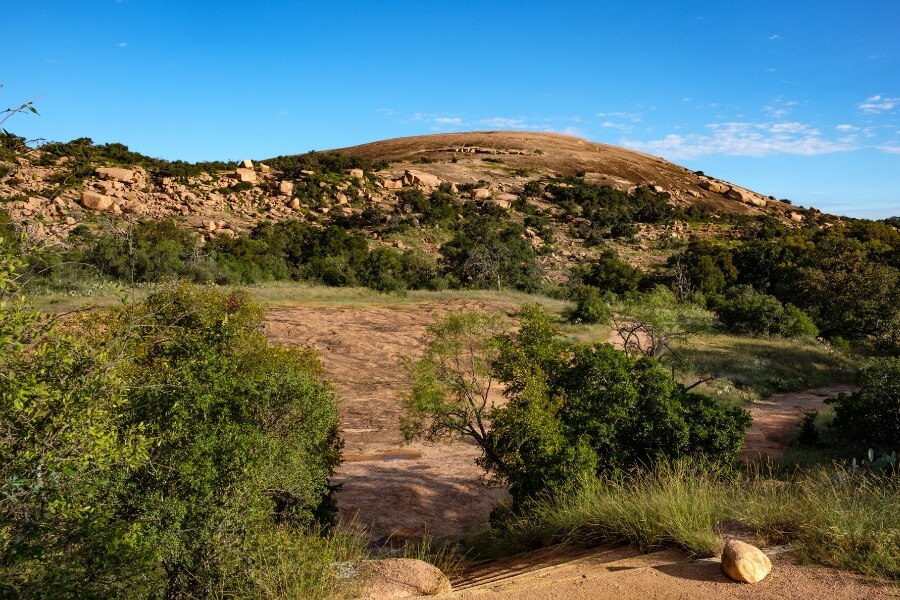
This massive pink granite dome rises over 400 feet above the surrounding landscape, offering stunning views of the Texas Hill Country.
You can hike to the summit of Enchanted Rock, where you’ll be rewarded with panoramic vistas and an up-close look at the unique geological formations.

The area is also popular for rock climbing and stargazing, with its clear night skies providing an ideal backdrop for observing the stars.
Enchanted Rock holds cultural significance for Native American tribes, who believed the rock had spiritual powers.

Today, it remains a cherished natural landmark and a favorite destination for both outdoor enthusiasts and nature lovers.
9. Gorman Falls
Gorman Falls, located within Colorado Bend State Park in central Texas, is a hidden gem found deep within a rugged canyon.

This stunning waterfall cascades over 60 feet down a sheer limestone cliff, creating a lush oasis of ferns, mosses, and vibrant greenery.
You can hike to Gorman Falls along the park’s scenic trails, immersing yourself in the beauty of the surrounding wilderness.
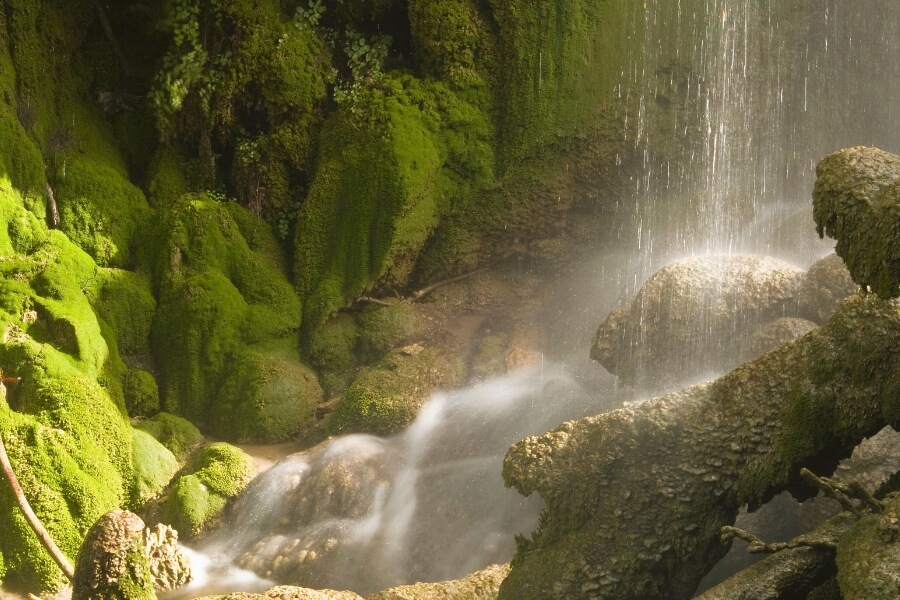
The falls are fed by spring-fed streams, which contribute to the area’s rich biodiversity and scenery.
Colorado Bend State Park offers camping facilities, so you can spend the night and fully experience the tranquility of nature under the star-filled Texas sky.

The waterfall is a popular photography destination, and there’s no surprise as to why!
Just take a look at the cascading water and lush greenery and you’ll feel like you’ve been transported to another world where cities don’t exist and nature has taken over.
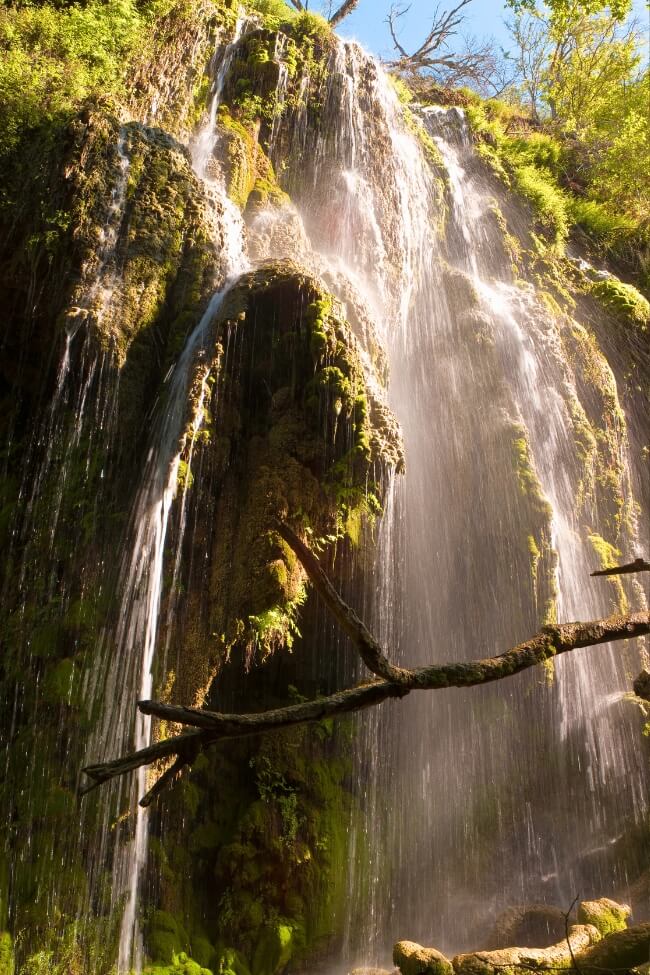
10. Devils River State Natural Area
Devils River, located in southwest Texas, is a remote and pristine waterway known for its clear, turquoise waters and rugged canyon scenery.

The river flows through the Chihuahuan Desert, offering a wild and untamed landscape for outdoor adventurers to explore.
You can enjoy activities such as kayaking, canoeing, and fishing along the most untouched river in Texas.
Devils River is protected as part of the Devils River State Natural Area, ensuring its conservation and preservation for future generations to enjoy.
The area is home to diverse plant and animal life, including rare species such as the Devils River minnow.
Access to Devils River is limited and requires permits, allowing for a pristine and secluded outdoor experience away from the crowds.
Since it’s so far from big cities the area is perfect for stargazing too.
Just imagine camping here under the stars!
11. Lost Maples State Natural Area
Lost Maples State Natural Area, situated in the Texas Hill Country, is known for its stunning fall foliage and rugged limestone cliffs.
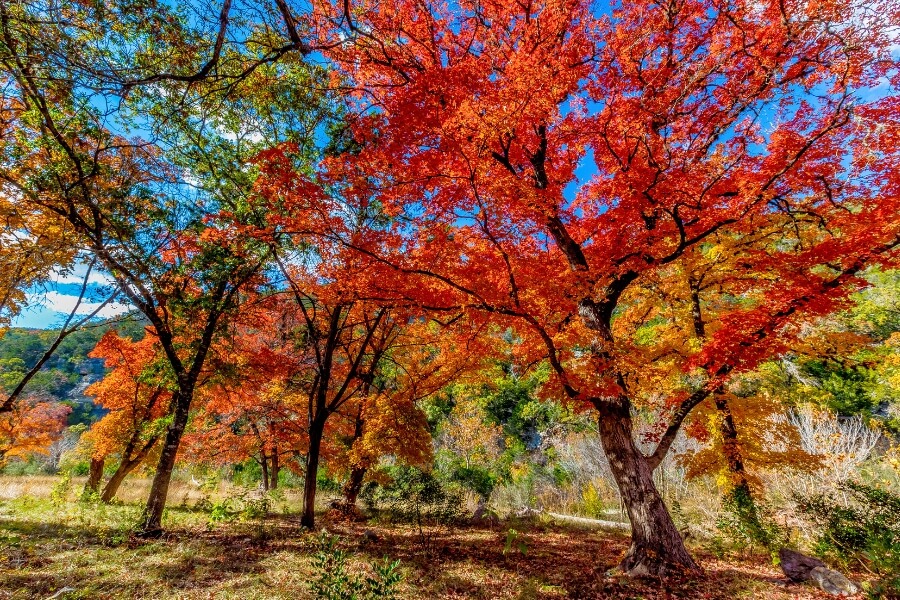
The park is named after the rare bigtooth maple trees that dot its landscape, offering a spectacular display of vibrant colors during the autumn months.
You can explore over 10 miles of hiking trails, winding through scenic canyons and along crystal-clear streams.

The park is also popular for birdwatching, with opportunities to spot rare species such as the golden-cheeked warbler and the black-capped vireo.
Camping facilities are available for those who want to spend more time immersed in the beauty of Lost Maples.
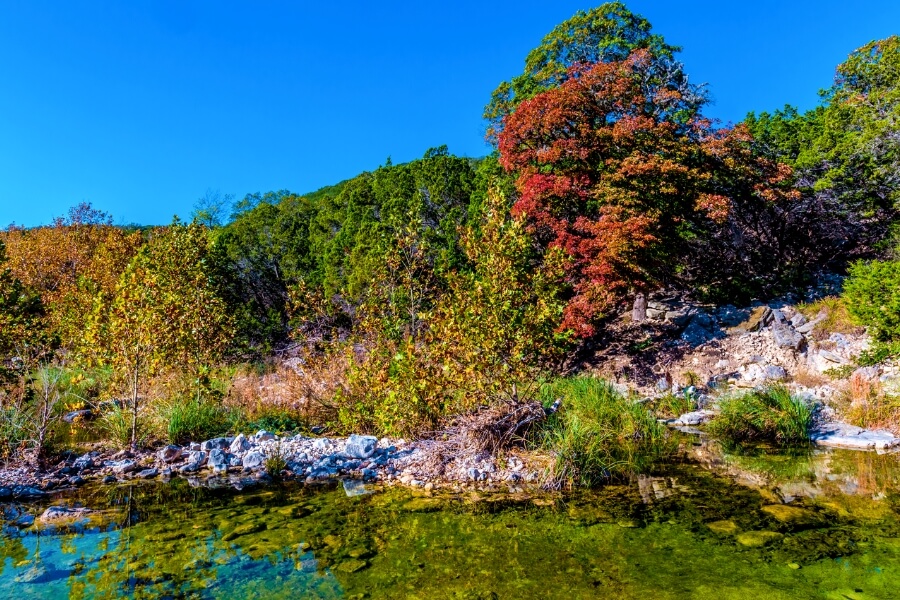
To make sure you make the most of your trip stay updated on the fall foliage updates using the link below.
12. Monahans Sandhills State Park
Monahans Sandhills State Park, located in west Texas, is a captivating desert landscape characterized by its vast expanses of shifting sand dunes.
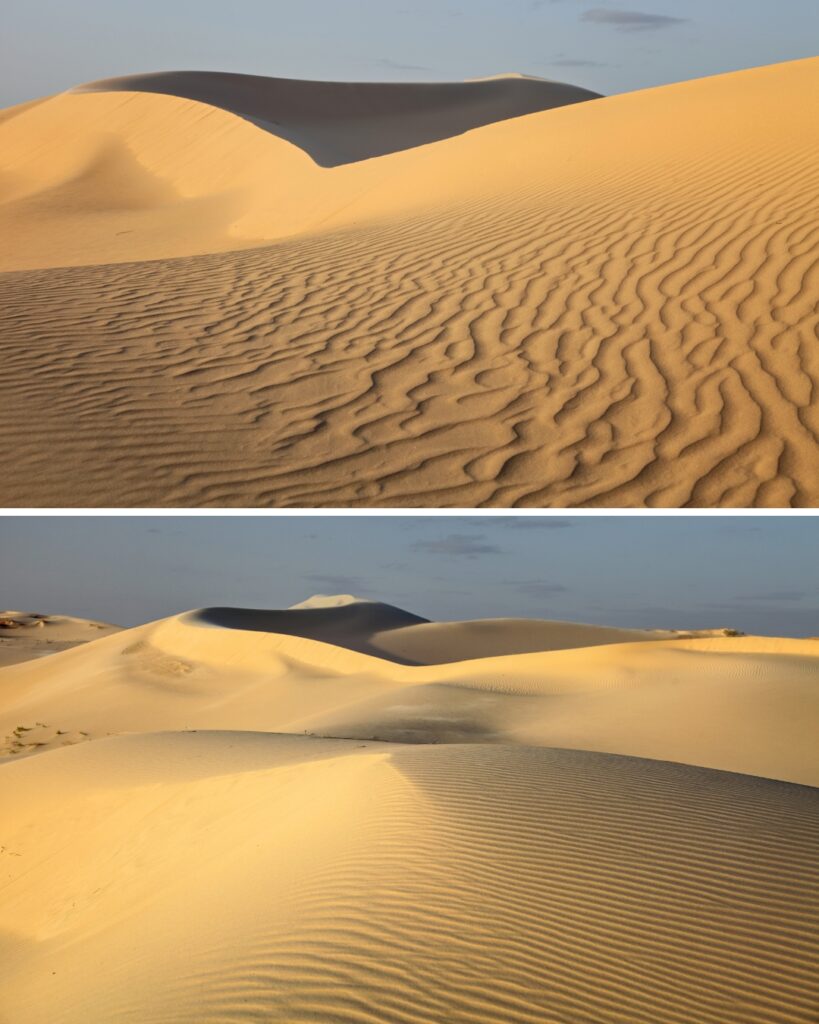
You can explore the park by hiking or sledding down the sandy slopes, experiencing the thrill of sand surfing in the heart of the desert.
The park’s unique ecosystem is home to a variety of desert wildlife, including roadrunners, javelinas, and coyotes.
Camping facilities are also available for overnight stays, so you can experience the tranquility of the desert night sky.
Monahans Sandhills State Park offers a one-of-a-kind opportunity to immerse yourself in the beauty and solitude of the desert landscape, making it a must-visit destination in Texas.
13. Dinosaur Valley State Park
Dinosaur Valley State Park, located near Glen Rose, Texas, is home to some of the best-preserved dinosaur tracks in the world.
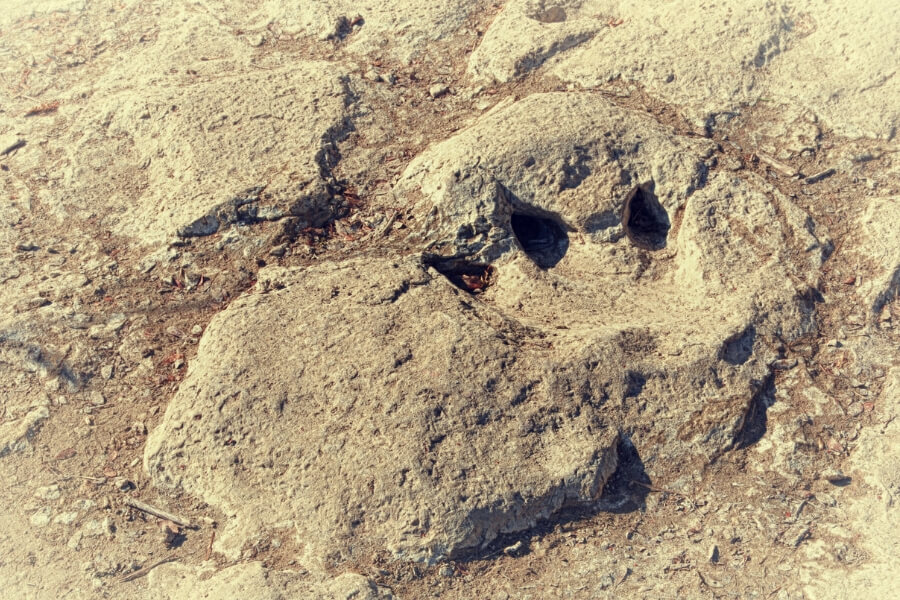
The park’s limestone riverbeds contain hundreds of dinosaur footprints, including tracks from sauropods and theropods that roamed the area over 100 million years ago.
You can hike along the riverbeds and see the tracks up close, providing a unique glimpse into the prehistoric past.
The park also offers camping, picnicking, and swimming opportunities, allowing visitors to enjoy the natural beauty of the Paluxy River.
Interpretive exhibits and guided tours provide insight into the park’s rich paleontological history and the dinosaurs that once called this area home.
Dinosaur Valley State Park offers a thrilling adventure for visitors of all ages, allowing them to step back in time and walk in the footsteps of giants.
14. Jacob’s Well
Jacob’s Well, located in the Texas Hill Country near Wimberley, is a captivating natural spring known for its crystal-clear waters and deep underwater caves.
And you won’t believe how deep it is!

The well is the second largest fully submerged cave in Texas and the deepest part of the cavern system is 140 feet deep!
You can swim in the relaxing waters of Jacob’s Well when the water levels are safe enough, and the water remains a refreshing 68 degrees Fahrenheit year-round.
However, access to the well is limited and requires reservations to ensure conservation and safety.
The area surrounding Jacob’s Well offers opportunities for hiking and picnicking, allowing you to enjoy the scenic beauty of the Texas Hill Country.
Just be aware that if water levels are too low then the well is sometimes closed for the season.
The summer season when it is meant to be open is typically from May to September, but if water levels are too low the well remains closed.

